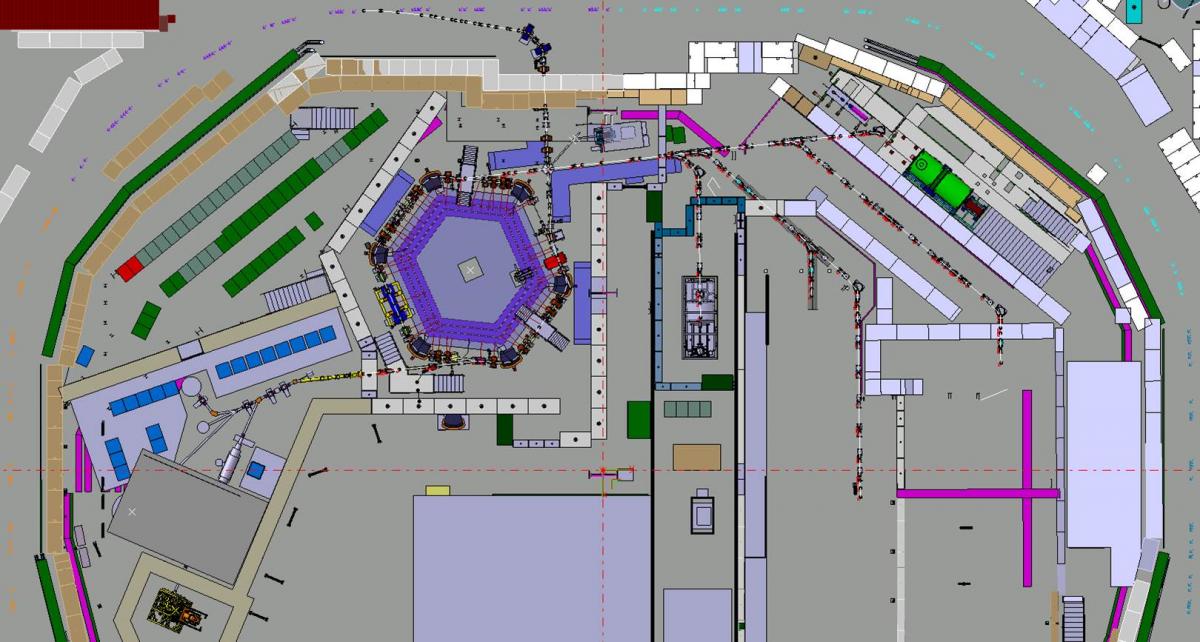The ELENA project
CERN has a longstanding tradition of pursuing fundamental physics on extreme low and high energy scales. The present physics knowledge is successfully described by the Standard Model and the General Relativity. In the anti-matter regime many predictions of this established theory still remain experimentally unverified and one of the most fundamental open problems in physics concerns the question of asymmetry between particles: why is the observable and visible universe apparently composed almost entirely of matter and not of anti-matter?
There is a huge interest in the very compelling scientific case for anti-hydrogen and low energy anti-proton physics, here to name especially the Workshop on “New Opportunities in the Physics Landscape at CERN” which was convened in May 2009 by the CERN Directorate and culminated in the decision for the final approval of the construction of the Extra Low ENergy Antiproton (ELENA) ring by the Research Board in June 2011. ELENA is a CERN project aiming to construct a small 30 m circumference synchrotron to further decelerate anti-protons from the Antiproton Decelerator (AD) from 5.3 MeV down to 100 keV. The layout of the ELENA ring with its main components is sketched in Figure 1.

Figure 1: Presentation of the ELENA ring and its components.
Controlled deceleration in a synchrotron equipped with an electron cooler to reduce the emittances in all three planes will allow the existing AD experiments to increase substantially their anti-proton capture efficiencies and render new experiments possible.
In that sense ELENA is an upgrade of the Anti-proton Decelerator (AD) at CERN and is devoted to experiments for physics using low energy anti-protons. It will be located in the AD Hall as shown in Figure 2.

Figure 2: ELENA in the AD Hall, where in the inner part of the AD Ring the experiments are hosted as well.
The main topics are the anti-hydrogen production and consecutive studies of the features of this anti-matter atom as well as the anti-proton nucleon interaction by testing the QED to extremely high precision. ELENA will increase the number of useful anti-protons by one to two orders of magnitude and will allow serving up to four experiments simultaneously. Beam lines from ELENA to various experiments are show in Figure 3.

Figure 3: ELENA and the beam lines to the different experiments in the AD Hall.
The motivation for ELENA was driven by the perspective to increase the efficiency of the anti-proton facility with its compact and time consuming experiments and by the steadily growing interest of additional research groups to share the available beam time. In particular, concrete motivations from the physics side arise in a number of theoretical approaches extending the established model frame work including a consistent unified description of the corner stones of physics: Lorentz symmetry, quantum mechanics and gravity. Experiments with anti-protons will substantially increase the knowledge of atomic, nuclear and particle physics by testing precisely familiar interactions and fundamental constants, by studying discrete symmetries and by searching for new interactions.
These days anti-hydrogen atoms are produced frequently by three collaborations at the AD: ATRAP, ALPHA, and ASACUSA employing essentially similar methods. Whereas ATRAP and ALPHA produce anti-hydrogen at rest, ASACUSA produces a beam of these atoms for hyperfine transition studies in low magnetic fields.
In 2002 both first the ATHENA collaboration and shortly thereafter the ATRAP group announced the creation of the first "cold" anti-hydrogen. Still, since the neutral anti-hydrogen atom is unaffected by the electric fields used to trap its charged components the anti-hydrogen hits the trap walls and annihilates very soon after its creation.
High-precision tests of the properties of anti-hydrogen in magnetic minimum traps can only be performed if the anti-hydrogen atoms are cold enough to be hold in place for a relatively long time. The anti-hydrogen atoms have a magnetic moment which interacts with an inhomogeneous magnetic field; low field seeking anti-hydrogen atoms can be trapped in a magnetic minimum. In fall 2010 the ALPHA collaboration reported first the success of 38 trapped anti-hydrogen atoms. A year later life times of more than 15 minutes of the anti-hydrogen atoms were observed by both collaborations ALPHA and ATRAP. Finally ALPHA reported on the very first spectroscopy of an anti-matter atom demonstrating the observation of resonant quantum transitions in anti-hydrogen by manipulating the internal spin state.
In addition, new supplementary experiments at the AD, as AEGIS and GBAR are presently preparing for precise measurements of the gravitational interaction between matter and anti-matter. Further the BASE collaboration suggested a measurement of the magnetic moment of the anti-proton increasing the precision by a factor of 1000 as compared to the successful recent result of the ATRAP group at the AD.
The basic concept of the ELENA ring and transfer lines to the experiment is completed, the TDR is published and the design and the integration of components are ongoing. The place inside the AD hall, where ELENA will be installed, will only be made available during the first part of 2015, when the kicker equipment can be moved to the new building, which is finished in its body shell, see Figure 4. After installation in 2015 and 2016, the commissioning of the ELENA ring is planned for the second half of 2016 in parallel to AD operation mainly with the help of a dedicated source delivering 100 keV protons and H- ions. During the first part of 2017, the existing magnetic transfer lines from the AD to the experiments will be dismantled and the new electrostatic lines from ELENA installed. After commissioning of the new electrostatic lines, first beams for physics are expected in the second half of 2017.

Figure 4: Inside the new building 393 during the opening ceremony in April 2014
